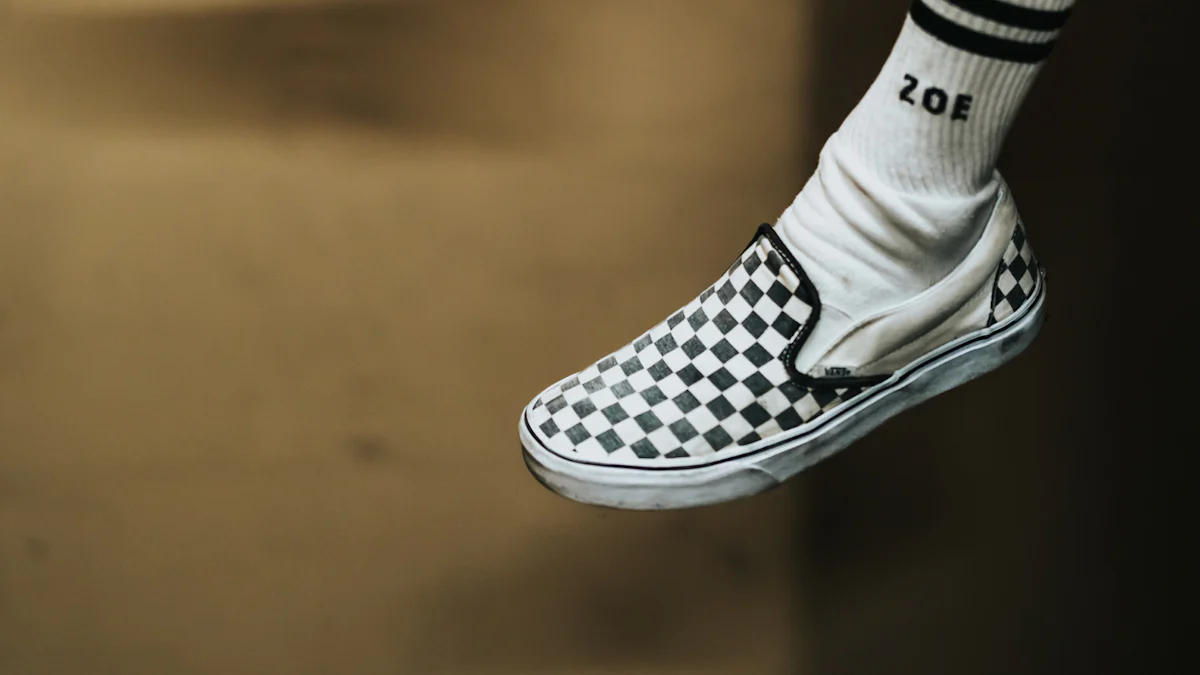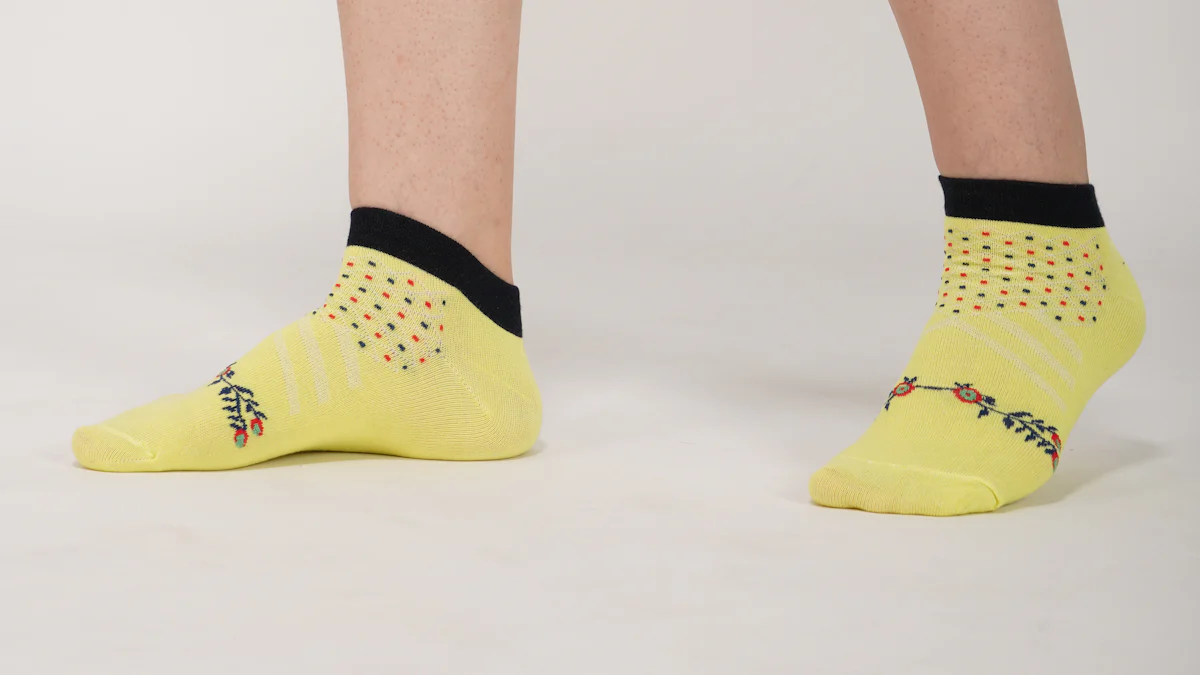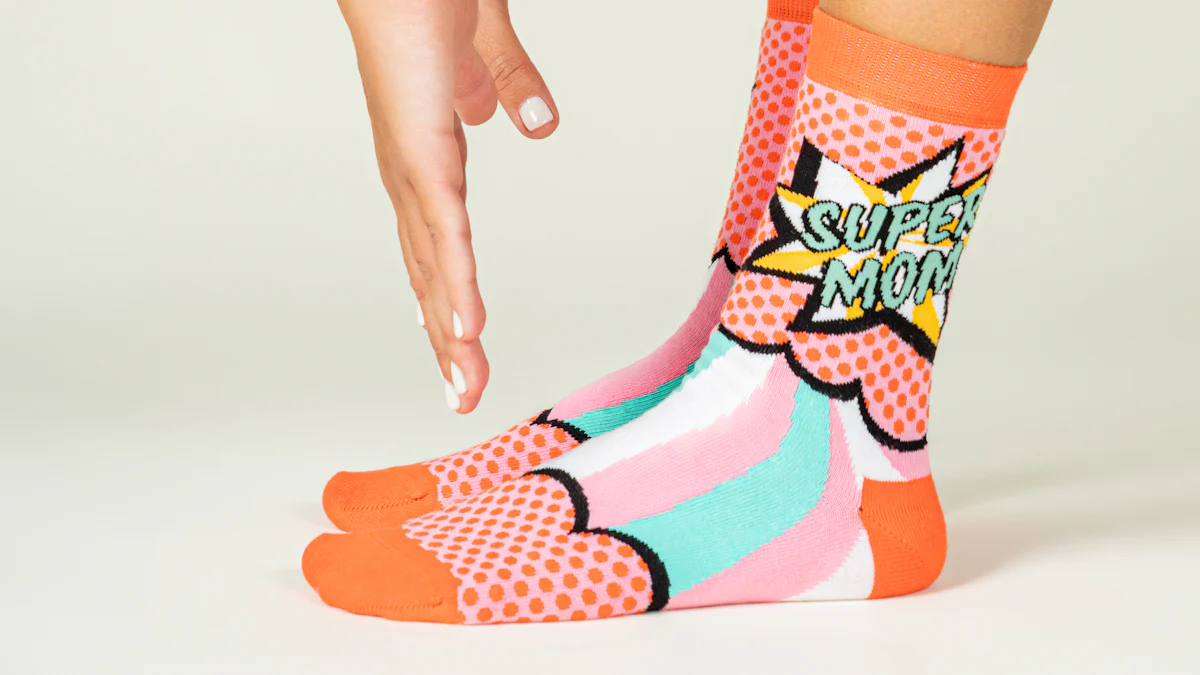
Grip socks have seen a surge in popularity, with interest growing by 35% over the past year. These specialized socks provide enhanced traction and stability, making them essential for various activities. Choosing the right sock with grip can significantly impact performance and safety. This guide aims to equip readers with the knowledge needed to make an informed decision when selecting grip socks.
Understanding Grip Socks

What Are Grip Socks?
Definition and basic features
Grip socks are specialized socks designed to enhance traction and prevent slipping. These socks feature a non-slip fabric and often have a textured surface. The design ensures better stability during physical activities. The primary purpose of grip socks is to provide extra grip and stability.
Common materials used
Manufacturers use premium quality, breathable materials to make grip socks. These materials ensure comfort and protect the feet. Common materials include cotton, polyester, and spandex. Rubber pads and thick soles are also integrated to enhance grip and support. The compressive material in grip socks improves blood circulation in the feet.
Benefits of Grip Socks
Enhanced traction and stability
Grip socks offer enhanced traction and stability. The special grip pads on the sole ensure better traction. This feature reduces the risk of slippage inside shoes. Normal socks may lead to instability and discomfort, but grip socks provide a secure fit.
Improved performance in activities like yoga, pilates, and dance
Grip socks improve performance in activities such as yoga, Pilates, and dance. The enhanced grip allows for better control and precision. This improvement leads to more effective workouts and safer practice sessions. The socks help maintain balance and prevent unnecessary movements.
Prevention of slips and falls
Grip socks prevent slips and falls by providing a stable base. The textured surface and rubber pads ensure a firm grip on various surfaces. This feature is especially beneficial for elderly individuals and those with mobility issues. The prevention of slips and falls enhances overall safety during physical activities.
Types of Grip Socks
Full-toe vs. open-toe designs
Grip socks come in full-toe and open-toe designs. Full-toe designs cover the entire foot, providing maximum protection and warmth. Open-toe designs allow for better ventilation and flexibility. The choice between these designs depends on personal preference and activity requirements.
Ankle-length vs. knee-high options
Grip socks are available in ankle-length and knee-high options. Ankle-length socks are suitable for low-impact activities and daily wear. Knee-high options provide additional support and coverage for more intense activities. The length of the sock with grip should match the specific needs of the user.
Specialized grip socks for different activities
Manufacturers create specialized grip socks for different activities. Yoga and Pilates socks are lightweight and flexible. Dance socks offer enhanced grip and support for dynamic movements. Sports-specific grip socks provide additional cushioning and stability. Choosing the right type of sock with grip enhances performance and comfort.
Factors to Consider When Choosing Grip Socks
Material and Comfort
Breathability and moisture-wicking properties
Choosing the right material for a sock with grip is crucial. Breathable materials like cotton and polyester ensure that feet remain dry and comfortable. Moisture-wicking properties help to reduce sweating, which can prevent blisters and abrasions. A sock with grip made from these materials offers enhanced comfort during prolonged use.
Cushioning and support
Cushioning and support play a significant role in the overall comfort of a sock with grip. Adequate cushioning helps to absorb impact, reducing strain on the feet. Supportive materials like spandex provide a snug fit, improving foot stability. This combination ensures that the sock with grip offers both comfort and protection during physical activities.
Fit and Size
Importance of proper sizing
Proper sizing is essential when selecting a sock with grip. An ill-fitting sock can cause discomfort and reduce the effectiveness of the grip. A sock that is too tight may restrict blood flow, while one that is too loose can lead to bunching and slipping. Ensuring the correct size enhances both comfort and performance.
Tips for finding the right fit
Finding the right fit involves several steps. First, measure the foot’s length and width accurately. Compare these measurements with the sizing chart provided by the manufacturer. Consider trying on different sizes to find the most comfortable fit. A well-fitted sock with grip should feel snug but not constrictive, providing a secure and stable base.
Grip and Traction
Types of grip patterns
Grip patterns vary widely among different socks. Some socks feature full-foot grips, while others have treads primarily on the soles. The choice of grip pattern depends on the intended use. Full-foot grips offer maximum traction for activities like yoga and Pilates. Sole-only grips provide adequate traction for everyday wear and low-impact exercises.
Evaluating grip strength and durability
Evaluating the grip strength and durability of a sock with grip is essential. Look for socks with high-quality rubber pads or textured surfaces. These features ensure long-lasting grip and stability. Test the grip by performing various movements to assess its effectiveness. Durable grip patterns maintain their functionality even after multiple washes, providing consistent performance over time.
Style and Design
Aesthetic Preferences
The design of a sock with grip often reflects personal style. Many brands offer various colors, patterns, and designs. Some people prefer vibrant and bold colors. Others may choose neutral tones for a more understated look. The aesthetic appeal of a sock with grip can enhance the overall workout experience. A visually appealing sock with grip can boost confidence and motivation.
Matching with Workout Attire
Matching a sock with grip with workout attire adds a cohesive look. Coordinating colors and styles create a polished appearance. For example, pairing black grip socks with black leggings offers a sleek look. Brightly colored socks can add a pop of color to a monochrome outfit. The right sock with grip complements the entire workout ensemble. This attention to detail can elevate the overall fitness routine.
How to Wear and Care for Grip Socks

Proper Wearing Techniques
Ensuring a snug fit
A sock with grip must fit snugly to provide optimal performance. Ensure the sock covers the entire foot without leaving gaps. The heel should align perfectly with the heel pocket of the sock. A well-fitted sock with grip prevents slipping and enhances stability during activities. Check for any wrinkles or bunching, as these can cause discomfort and reduce effectiveness.
Avoiding common mistakes
Avoid common mistakes when wearing a sock with grip. Do not wear socks that are too tight, as this can restrict blood flow. Loose socks can lead to bunching and slipping, reducing the grip’s effectiveness. Always ensure the grip pads are positioned correctly on the sole. Misaligned grip pads can compromise traction and stability. Regularly check the condition of the socks to ensure they remain effective.
Cleaning and Maintenance
Washing instructions
Proper washing extends the lifespan of a sock with grip. Hand wash the socks in cold water using mild detergent. Avoid using bleach or fabric softeners, as these can damage the grip pads. Gently squeeze out excess water without wringing the socks. Lay the socks flat to dry, away from direct sunlight or heat sources. Machine washing may be possible, but always follow the manufacturer’s instructions.
Tips for prolonging the lifespan of grip socks
Prolong the lifespan of a sock with grip by following a few simple tips. Rotate between multiple pairs to reduce wear and tear. Store the socks in a cool, dry place to prevent moisture buildup. Inspect the grip pads regularly for signs of wear. Replace the socks if the grip pads become worn or damaged. Proper care ensures the socks maintain their effectiveness and comfort over time.
“I used to experience discomfort and irritation on my feet during Pilates, especially when working on the reformer. Since switching to Pilates Honey grip socks, I’ve noticed a significant difference. The socks are incredibly comfortable, and the moisture-wicking properties keep my feet dry even during intense workouts. I no longer have to worry about blisters or sweaty feet. These grip socks are a game-changer.” – Satisfied Customer
“I’ve tried various grip socks, but Pilates Honey socks are by far the best. The quality of the grips is outstanding, providing a secure hold on the mat. I’ve noticed a remarkable improvement in my muscle activation and overall strength. It’s evident that these grip socks have been thoughtfully designed to enhance performance. I recommend them to anyone looking to take their Pilates practice to the next level.” – Happy User
The guide has covered essential aspects of grip socks, including their benefits, types, and selection criteria. Choosing the best grip socks based on individual needs ensures optimal performance and comfort. Investing in quality grip socks provides superior foot stability, enhanced grip, and support. Proper care and maintenance extend the lifespan of grip socks. Prioritize personal preferences and activity requirements when making a choice. Quality grip socks enhance safety and performance in various activities.
See Also
Essential Tips for a Warm Winter with Cozy Socks

